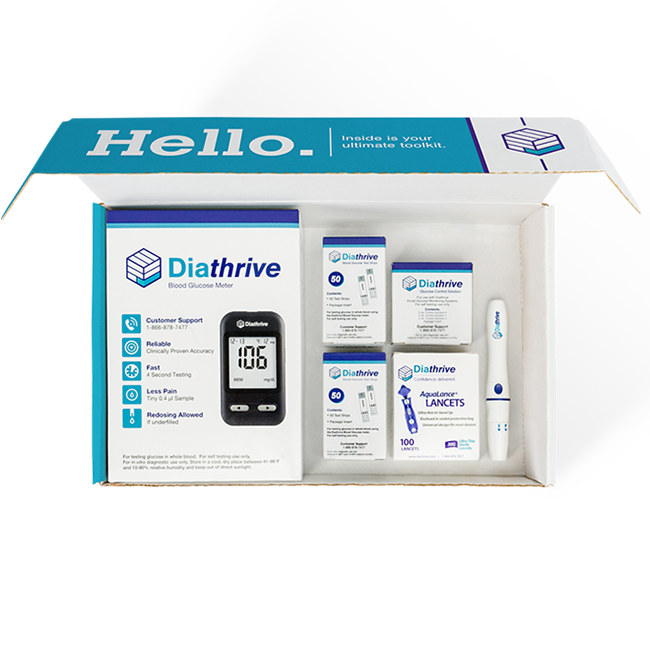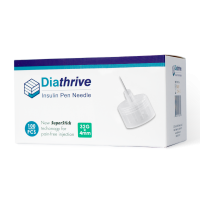
What diets are people with diabetes trying these days? Here are the pros and cons for some of the most popular diabetes diets right now.
The diabetes and health world online these days is overloaded with diets that often teach eliminating an entire type of food or ingredient or macronutrient from your diet. Worse, they often contradict each other: eat more fat vs. eat more carbs vs. eat only plants vs. eat more protein!
It’s confusing and overwhelming, often leaving readers in search of motivation and guidance to simply improve their nutrition habits with a feeling of “What the heck am I supposed to eat?”
Before you jump into the next restrictive diet, let’s take a look at the pros and cons of some of today’s most popular (or at least, most extreme) diabetes diets.
The Ketogenic Diet / The Bernstein Diet / The Low-Carb Diet
Resources to learn more:
This one is all about carbs -- and more specifically, eliminating them from your diet. Each version of eating low-carb offers its own rules and goals. Some ask that you increase your fat consumption more than your protein consumption, and vice versa.
The “ketogenic diet” approach to low-carb eating is definitely the most severe in its rules and restrictions. To achieve a “ketogenic” state in which your body is truly burning enough body fat for fuel (rather than glucose) that you begin producing measurable amounts of ketones, the guidelines ask that eat fewer than 20 grams of net carbohydrates total every day.
This means that not only are you ditching the obvious carbs -- like pasta, bread, sugar and fruit -- but you’re also ditching many seemingly low-carb vegetables like broccoli, bell pepper, carrots which can add up to 10 or so grams of low-impact carbohydrates in a serving.
A more general low-carb diet usually recommends eating fewer than 50 grams of total carbohydrate per day which is more doable for some. This approach would also offer more flexibility in terms of healthy whole foods containing low-impact carbohydrates like broccoli.
PROS:
You’ll see nearly instant benefits in both your blood sugar and your weight-loss goals. Eating fewer carbohydrates means you’re eating less of the primary thing that raises blood sugar which means you’ll presumably need less insulin and experience significantly smaller fluctuations in your blood sugar.
You’ll also likely experience fewer low blood sugars, too, because you’re taking less insulin which means you’re taking less of the primary ingredient that leads to lows.
Eating fewer carbs also leads to steady weight-loss for many, especially in the first two weeks where some of your weight-loss is simply due to water retention because carbohydrates cause the body to retain more water.
Cutting your carbs drastically means cutting the amounts of water you’re retaining, too. From there, fat-loss can be significant for many because with less access to carbohydrates for easy glucose, your body turns to burn more body fat for its energy needs.
For many, strict low-carb eating is a sustainable lifestyle that has helped them reach weight-loss goals and sustain very steady blood sugar levels. The trick is finding what severity of low-carb eating you can personally sustain.
CONS:
Depending on the restrictiveness of the low-carb diet you choose, it can be very hard for many people to truly sustain long-term. A ketogenic diet, for example, can lead to such intense feelings of carb-deprivation (because the human body was designed to want carbohydrates) that some will find they quickly gain back the weight they lost as their body craves carbs more and more.
Another common problem with the diet is that it is so restrictive on plants, that you’ll find yourself very constipated and eating very few of the things we’ve been taught for centuries as the most important part of our diet: vegetables! Is a diet that scorns broccoli truly healthy?
And of course, many low-carb diets lead people to eating a lot of low-carb products which contain large amounts of sugar alcohols (which ferment in your gut and can cause a lot of stomach distress). Is your goal to cut carbs or eat more real food? It can be a slippery slope in a very strict low-carb diet.
Lastly, some people do find that the higher amounts of fat in a ketogenic diet actually makes them very insulin resistant, increases their overall insulin needs, and leads to weight-gain rather than weight-loss. It’s really hard to know if this will happen to you until you try it.
If a low-carb high-fat approach leads to insulin resistance, a low-carb high-protein approach might be better.
THINGS TO CONSIDER:
Before trying this approach to losing weight, ask yourself: how low-carb really makes sense? Certainly there’s tremendous benefit in cutting out processed breads, cookies, juice, and pasta, but does it feel logical to you to completely cut out whole-food plant sources like vegetables?
The vitamins and nutrients your body depends on are largely cut from this diet. Just because it leads to rapid weight-loss, does that mean it’s also automatically healthy?
If a lower-carb diet appeals to you, and helps your diabetes management, perhaps consider creating your own middle-ground.
Maybe you eat very low-carb during the day but consume something higher carb at night to ensure you don’t rebound a few weeks later with a carbohydrate-binge. Or maybe you aim for 100 grams of carbohydrates per day versus the 250+ that you currently consume?
My point is: you don’t have to eliminate all carbohydrates in order to benefit from removing or simply reducing some carbohydrates.
Low-Fat / High-Carb Plant-Based Diet
Resources to learn more:
A step beyond straight-forward veganism, the LFHC approach to eating for diabetes management is based on the fact that dietary fat does increase your insulin needs by creating insulin resistance.
From the day we’re diagnosed, we’re usually taught to count, limit, and manage our carbohydrate intake, but anyone with type 1 diabetes knows that a high-carb meal that is also high in dietary fat calls for an extra heaping of insulin to keep your blood sugar levels in range.
This diet encourages its followers to consume fewer than 20 grams of dietary fat per day -- and if you use a nutrition-tracking app, you’ll find that even a normally low-fat diet can add up to more fat than you thought.
To compensate for the dramatic reduction in dietary fat, you’ll be guided to dramatically increase your carbohydrate intake -- for some, as much as 500 grams per day. Which of course goes against everything you’ve been taught about diabetes and diet.
While a low-carb diet aims to reduce your need for insulin and overall blood sugar fluctuations by reducing carbs, this low-fat approach aims to reduce your insulin needs by dramatically increasing your sensitivity to insulin but also dramatically increasing your consumption of carbohydrates.
PROS:
Does it work? In terms of having a significant impact on your sensitivity to insulin, yes. The results are dramatic and fast.
And hey, you’ll be eating more than the recommended amount of whole plant-based foods! Talking about hitting your daily vitamin and fiber needs like whoa.
In the most extreme forms of this diet, eating any animal product is completely forbidden, but just like finding the right balance for you in a low-carb approach, the same could be said here.
Another huge benefit of this diet is that it would force you to improve your knowledge and cooking skills, learning how to make meals that are focused on plants rather than, for example, steak + veggies. In this diet, vegetables and fruits are the center focus.
Did I say fruits? You bet. The many carb-sources you’ve been told to limit and avoid -- like fruit and whole grains -- are highly encouraged here. Because you’re eating an extremely low amount of fat, your body will need far less insulin for those high-fructose fruits like grapes and cherries.
In fact, some of the diets biggest supporters report eating 6 bananas in a sitting in order to meet their caloric needs when you’re getting so few calories from fat and protein.
Those following the most restrictive form of this diet (fewer than 20 grams of dietary fat per day) report much more ease in managing their blood sugar levels because they need so much less insulin for very high-carb meals.
CONS:
Well, just because dietary fat causes you to need more insulin...does that mean it’s completely evil? Of course, the same can be said of carbohydrates for the low-carb fans, too.
But is removing an entire macronutrient a sane thing to do? Or more importantly: a healthy thing to do?
Fat is a critical nutrient for the body. Without enough fat in your diet, you’ll struggle to absorb fat-soluble vitamins like A, D, E, and K. Many women may see menstruation come to a halt, and your skin and hair and energy could fade fast.
While carbohydrates are not an “essential” macronutrient, dietary fat and the “essential fatty acids” it provides, are in fact essential to your body’s daily function.
And of course, just as those on extreme low-carb diets often find themselves binge-eating carbohydrates after a few weeks or months of the restrictive dieting, an extremely low-fat diet can lead to the same.
THOUGHTS TO CONSIDER:
There are many great aspects of this approach to eating -- namely it’s intense focus on eating more real, whole plants -- but is it too extreme to actually be healthy? Too much of a good thing and far too little of everything else?
Like the extreme low-carb diet, I think there are many useful takeaways from this approach, too. But why must we always go to such extremes in order to be successfully eating “healthy”?
Insulin sensitivity is not the only measure of one’s health. It’s one aspect of our health. Are you healthy by drastically increasing your sensitivity to insulin if you’re always drastically cutting down an essential nutrient your body needs in order to thrive?
Something to Try Instead
Where is the middle ground? Where is the diet that’s high in whole, plant-based food but still allows plenty of room for quality protein and fat? And heck, even some dessert!
While there are many who are steadfastly devout to either of these extreme diets, the general consensus for many others is that they’re just too extreme to follow long-term.
Instead, what if you created your own balanced approach to nutrition that includes a focus on whole foods, lots of vegetables, some meat, some fat, some carbs, plenty of exercise, plenty of water, and even some occasional dessert?
The goal is creating something you can follow long-term that gives you peace, energy, support in managing your blood sugars, and all of the vital nutrients your body needs.





